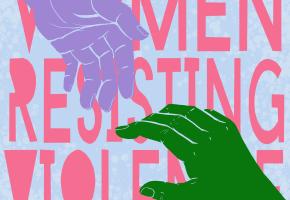Most people in Colombia have never experienced their country at peace. For over five decades several guerrilla groups and the Government have been fighting each other, leaving millions of victims. Colombia alone has experienced more forced disappearances of people than Chile, Argentina and Brazil combined. The country also sits at the top of the world list in regards to land mines, kidnappings, and internally displaced people (over six million).
This is about to change. At a time of rising concern about violent conflict throughout the globe Colombia is about to finalise the most significant peace process in the world.
Over the past three years the Government and the Armed Revolutionary Forces of Colombia (FARC) have been talking peace in Havana. They have already reached agreements on four major topics: land reform, illegal drugs, political participation and justice. The only remaining issues to complete the negotiations are the reintegration of guerrilla combatants into civilian life, and the oversight mechanisms to ensure that the agreements are implemented.
What brought about peace?
The main reason for the peace negotiations is that neither side could win the war. Under the Presidency of Alvaro Uribe (2000 – 2008) the State stepped up its military capacity to unprecedented levels. FARC resisted the formidable offensive but began to understand they would never achieve a military victory over the State.
In parallel, neighbouring countries saw leftist politicians reach government through the ballots instead of the bullets. Evo Morales in Bolivia, Rafael Correa in Ecuador, and Hugo Chávez in Venezuela.
At the same time, the government acknowledged the country had long delayed some structural reforms which were fundamental for its modernisation and development, such as rural and political reforms, and addressing the problem of illegal drugs production.

Innovations
Not only is Colombia finally on the path to peace. The country is also innovating in a number of ways that will inspire peace processes elsewhere:
1. This is the first peace process where negotiating panels have invited and listened to victims of the armed conflict, with the commitment to respond to the victim´s rights to truth, justice, reparation and guarantees for non-recurrence.
This commitment is largely a response to the unwavering efforts of human rights organisations. The level of documentation and analysis of violence in Colombia is unprecedented.
A Unit for Reparations of Victims has been created and this government body has embarked in the most ambitious programme for reparations of victims in the world. Despite initial reluctance, government and FARC have increasingly acknowledged their responsibility in human rights violations, and have started asking victims for forgiveness.
Parties have agreed on a special tribunal for peace. If offenders collaborate with the justice system they will benefit from reduced sentences, having to serve their term repairing victims and society, instead of sitting in a prison. The agreement has been hailed as groundbreaking. President Santos suggested it is “something that has never been achieved in any peace negotiation”.

2. Negotiations address land and drug issues. Unlike most countries in Latin America, Colombia has never experienced a comprehensive agrarian reform and its inequality index is among the highest in the world. There is a growing consensus that violence in rural Colombia has thrived upon land inequality and a failed model of rural development.
The peace negotiations have also tackled the related issue of production of illegal crops. Colombia is the number one exporter of coca in the world. This highly profitable business has become increasingly intertwined in the armed conflict, benefitting all armed actors.
After decades of criminalising peasants for growing coca, Colombia is taking the lead in pushing for a far more comprehensive approach in global policy on the war on drugs. This may have repercussions on international responses to other conflicts with links to drugs production, most notably Afghanistan.

3. Women are acknowledged as agents of change. Following significant pressure from women’s organisations, the Government and FARC agreed to create a Gender Sub Commission, with the task to review all documents and ensure a gender sensitive language. Colombia is probably the first ever country addressing LGBTI rights in a peace negotiation.
4. A regional commitment to peace. Four countries were asked to play a formal role in the negotiations: Cuba and Norway were appointed “guarantor countries”, and Venezuela and Chile were named “accompanying countries”. The selection of the countries indicate an emphasis in involving regional players, and balancing political inclinations (Venezuela and Cuba on one hand, and Chile on the other).

Change is already happening
The peace process has already delivered significant results even before its completion. While parties have not yet agreed on a ceasefire, they have also not engaged in armed confrontation for several months. The levels of confrontation have never been so low.
At the same time, Government and FARC have started to work together. Over the past year the military and the insurgents have joined efforts in clearing a rural area in Antioquia from land mines, to allow the community go back to normal life. This will now be replicated throughout the country. Both sides have also agreed to create a task force to speed up the search for disappeared people.
Looking forward: three tests
It is expected that government and FARC will sign a final peace agreement this year. This agreement will be an impressive achievement and will put and end to war. However peace is not only about former enemies signing a piece of paper.
Despite all the positive developments in the peace process public opinion remains largely sceptical. People simply don’t trust the government and FARC to deliver to their promises. The first major test for the peace process will therefore be to ensure broad public endorsement of the peace agreement in the plebiscite that will follow the signing.
The second test will be for government and FARC to turn words into deeds. No peace agreement in the world has ever been fully implemented and the post-agreement stage is nothing but the continuation of the negotiations, but with more public participation.
The most difficult test might be the cultural transformation of society. After decades of violence there is a need to address the wounds created by violence, as well as a cultural shift to challenge everyday violent and individualistic attitudes. The re-humanization of the other does not only involve combatants but society at large. As the women’s movement has suggested, building peace requires the acknowledgement that no one has the absolute truth and, therefore, the willingness and capacity to step out of one’s comfort zone. This cultural change will take time.
Kristian Herbolzheimer (kherbolzheimer@c-r.org) is Director of Colombia Programme at Conciliation Resources: www.c-r.org. This is an abridged version of a full article which you can find at www.latinolife.co.uk. Kristian will give a talk about the Colombian Peace Process on Saturday 18th June at London Goes Latin Festival. Find timings and other details @ www.crouchednfestival.org/la-clave

















